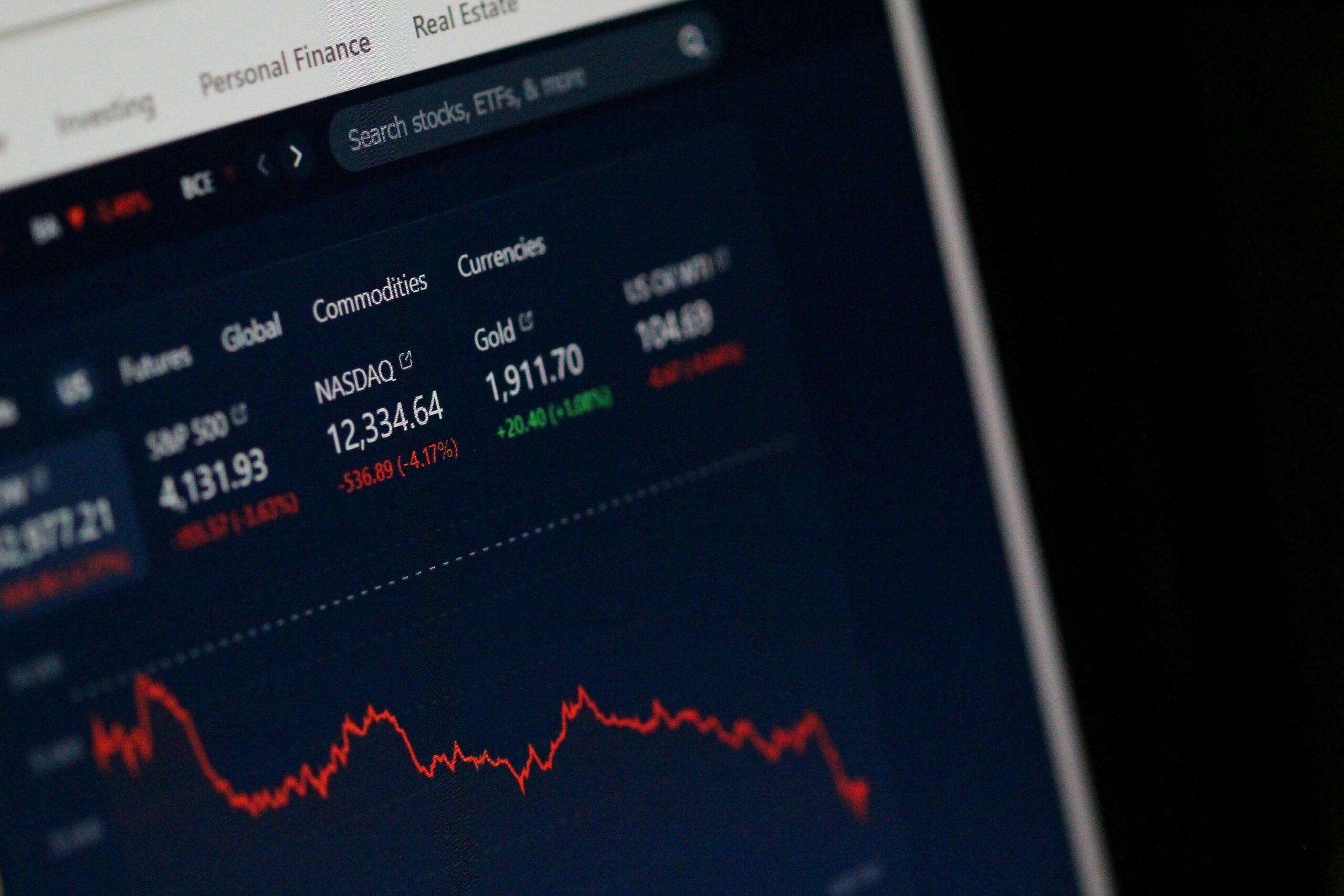Stock Market
Stock Market !

What is the Stock Market?
The stock market is a platform where investors can buy and sell shares of companies. These trades happen on stock exchanges like the New York Stock Exchange (NYSE) or the Nasdaq. The stock market acts as an indicator of the financial and economic health of a country, reflecting the progress of businesses and investor sentiment.

Stocks represent partial ownership in a company, granting shareholders a claim to its earnings and assets. Investing in stocks can provide significant returns over time, but it also involves risks, especially if market dynamics are not well understood.
Table of Contents
Stock Market Today: An Ever-Changing Landscape
The stock market today is more dynamic than ever, influenced by factors like global economic trends, technological advancements, and geopolitical events. Tracking stocks today requires staying updated with stock market news, which provides insights into market movements, company earnings, and broader economic indicators.
Modern tools and platforms make it easier to follow the share market today. Investors can monitor stock trading in real-time, set alerts for price changes, and even participate in automated trading. This accessibility has opened up the world of investing to a wide audience.
How Does the Stock Market Work?
The stock market operates through two primary segments:
- Primary Market: The primary market is where companies sell new shares to investors for the first time through initial public offerings (IPOs). Companies raise money directly from investors.
- Secondary Market: After shares are issued, they are traded among investors on the secondary market. This is what people called “stock market.”
These markets function through a network of buyers and sellers, often facilitated by brokers or electronic trading platforms. The prices of stocks fluctuate based on supply and demand, as well as external factors like economic conditions and company performance.
Why is the Share Market Important?
The share market serves several crucial functions:
- Capital Formation: Companies use the stock market to raise funds for expansion and innovation.
- Wealth Creation: Investors can grow their wealth by participating in the market.
- Economic Indicator: Stock market performance serves as a key indicator of the economy’s overall health.
- Liquidity: It provides a platform for investors to buy and sell securities easily.
How to Trade Stocks: A Step-by-Step Approach
For beginners, understanding how to trade stocks can seem overwhelming. Here’s a straightforward guide to get started:

- Educate Yourself: Learn the basics of stock trading, including key terms like “bull market,” “bear market,” and “dividends.” Numerous online resources and courses can help you grasp these concepts.
- Set Your Goals: Define what you aim to achieve through stock trading. Are you looking for long-term growth, income through dividends, or short-term profits?
- Choose a Broker: Select a reliable brokerage platform that offers the tools and resources you need. Many brokers provide educational materials, research tools, and demo accounts for practice.
- Research Stocks: Use stock market news and analysis to identify potential investment opportunities. Look into a company’s financial health, industry position, and growth prospects.
- Start Small: First of all, you should start with a small investment so that you gain both confidence and experience. when your confidence increases expand your portfolio step by step.
- Diversify Your Portfolio: Avoid putting all your money into one stock. Diversification helps reduce risk and improve the chances of achieving consistent returns.
- Monitor Your Investments: Regularly review your portfolio’s performance and make adjustments as needed based on market conditions.
Key Factors Influencing the Stock Market
Several factors influence stock prices and market trends, including:
- Economic Indicators: Data such as GDP growth, unemployment rates, and inflation impact market sentiment.
- Corporate Performance: Earnings reports and news about a company’s operations affect its stock price.
- Interest Rates: Central bank policies and changes in interest rates can drive market fluctuations.
- Global Events: Geopolitical tensions, natural disasters, and pandemics often cause volatility.
Stock Market News: Staying Informed

Reliable sources provide updates on:
- Market Trends: Understanding whether the market is bullish or bearish helps shape trading strategies.
- Corporate Announcements: News about mergers, acquisitions, or leadership changes can significantly impact stocks today.
- Economic Developments: Policies, trade agreements, and other macroeconomic factors play a critical role.
- Sector Performance: Some industries perform better during specific economic cycles.
Common Mistakes to Avoid in Stock Trading
- Emotional Decisions: Letting fear or greed dictate your trades can lead to poor outcomes.
- Lack of Research: Investing without proper analysis increases the risk of losses.
- Overtrading: Buying and selling too often can increase fees and reduce your profits.
- Ignoring Diversification: Concentrating your investments in one sector or stock can backfire.
- Timing the Market: Trying to predict exact market highs and lows is a risky strategy.
Advanced Stock Trading Strategies
For those ready to move beyond the basics, advanced strategies like options trading, swing trading, and leveraging margin accounts can be explored. However, these strategies come with higher risks and require a deep understanding of market dynamics.
Conclusion
The stock market offers immense opportunities for wealth creation, but it requires knowledge, discipline, and a willingness to learn. Whether you’re exploring the share market today or planning long-term investments, staying informed and adopting a strategic approach can set you on the path to success. Leverage resources like stock market news and trading tools to navigate this fascinating financial world.
Remember, the journey of professional stock trading is ongoing. Start small, stay consistent, and keep learning to achieve your financial goals. With dedication and the right strategies, the stock market can be a powerful tool for building financial security and prosperity.Stock Market

Stock Market
Sensex Soars Over 2,975 Points, Nifty Tops 24,900 After India-Pak Ceasefire: 7 Reasons Behind Dalal Street’s Big Rally

On May 12, 2025, the Sensex jumped by 2,975.43 points to close at 82,429.90, marking a 3.74% rise. At the same time, the Nifty climbed 916.70 points to finish at 24,924.70, up 3.82%. This strong rally is the best day for both indexes in four years. The main trigger was the historic India-Pak ceasefire, which eased long-standing geopolitical tensions. This event lifted investor mood and sparked widespread buying on Dalal Street.
Table of Contents

Sensex Rally Signals New Confidence on Dalal Street
The Sensex surge showed not just relief from geopolitical risks but also a combination of factors that lifted market confidence. After a period of uncertainty and conflict, the ceasefire prompted investors to move in with renewed hope. The rally spread across sectors, making this a broad market event rather than one driven by just a few stocks.
7 Reasons the Sensex and Nifty Rose Sharply Today
1. India-Pakistan Ceasefire Cuts Geopolitical Risks
The biggest reason for today’s rise was the ceasefire deal between India and Pakistan. It calmed fears of conflict and made the region safer for business and investment. Geopolitical tensions had caused sharp market moves before. Now, with peace talks bearing fruit, investors found new reasons to buy Indian shares.
2. U.S.-China Trade Agreement Boosts Global Mood
At the same time, news of the U.S. and China easing some trade barriers helped global markets. This reduced concerns about a lasting trade war. When global trade feels less threatened, markets worldwide gain strength. India’s market benefited from this positive shift in global trade relations.
3. Progress in Russia-Ukraine Peace Talks Eases Global Pressure
The latest talks between Russia and Ukraine suggested a possible reduction in fighting. This news eased global market pressures as well. Stable global relations tend to lift emerging markets like India. The combination of peace advances in different parts of the world helped push the Sensex higher.
4. Gains Broadly Shared Across Key Sectors
Unlike some rallies which focus on just a few sectors, this rally included almost all of them. Banking, IT, automobiles, and consumer goods sectors all made good gains. This shows that the market’s strength is broad-based, not limited to only select industries. A wide sector rally makes the rise more sustainable.
5. Investors Show Greater Risk Appetite
After times of uncertainty, investors are more willing to take risks again. This shift was seen in the rise of mid-cap and cyclical stocks that had been weak earlier. Both institutional and retail investors joined the buying spree. Lower risk fears helped push stock prices higher across the board.

6. Stable Domestic Economic Conditions
India’s own economy showed steady signs with stable inflation and steady GDP growth projections. Fiscal deficits remain manageable. These facts reassured investors about the market’s underlying strength. A solid economy makes it easier for companies to grow profits and keep stock prices up.
7. Surge in Investor Wealth and Mood
The overall wealth of investors on Dalal Street jumped by over Rs 16 lakh crore with this rally. This was not just a rise in prices but also a change in investor mood. Confidence is key to keeping markets moving higher. The wealth gain gave investors a positive feeling about future gains.
What the Rally Means for India’s Markets Ahead
The strong moves in Sensex and Nifty show that global and local stability can lift markets. Although stock markets can still be volatile, today’s trading sets a hopeful tone for coming months. More capital inflows and market growth may follow if peace and economic stability hold.
Key Takeaways for Stock Investors:
- Geopolitical peace greatly influences stock market gains, as shown by the India-Pak ceasefire.
- Global events like trade deals and peace talks also shape India’s market outlook.
- A rally including many sectors signals strong market health.
- Economic indicators such as inflation and GDP growth remain important to watch.
- Investor confidence often changes with news on peace and economic policies.
The surge in the Sensex and Nifty after the India-Pak ceasefire highlights how peace and stability matter most to Indian markets. As tensions ease, investors on Dalal Street are pushing prices higher, signaling wider optimism. This event not only lifts current sentiment but may guide stock trends for months ahead.
Stock Market
Defence Stocks in Focus: All You Need to Know About HAL, BEL, Bharat Forge and Others 9 MAY 2025 Exclusive News !

The rise in India-Pakistan tensions has brought defence stocks into the spotlight. Investors are watching companies like Hindustan Aeronautics Ltd (HAL), Bharat Electronics Ltd (BEL), Bharat Dynamics Ltd (BDL), and Bharat Forge closely. These stocks have seen a jump as India plans to boost its defence spending and build more military equipment at home. This article covers why defence stocks are gaining attention, who the key players are, and what lies ahead for this sector as India strengthens its military.

Table of Contents
Why Defence Stocks Are Rising
The main reason defence stocks are gathering momentum is the growing conflict between India and Pakistan. After India’s precision strikes on terror camps in Pakistan and Pakistan-occupied Kashmir, these stocks went up by 2% to 7%. Investors expect India to spend more on upgrading its weapons and building new defence technology. The government is pushing hard to make more defence gear within India, which helps these companies grow. Key reasons behind the rise in defence stocks include:
- Rising geopolitical tensions and the need for better security
- Government focus on modernizing defence forces
- Boost in defence spending predicted for coming years
- Big push for Make in India and local defence production
The Top Defence Stocks in India
Hindustan Aeronautics Ltd (HAL)
HAL is a major player in India’s aerospace and defence sector. It builds aircraft, helicopters, engines, and avionics gear. It also handles aircraft repairs and maintenance. As India looks to upgrade its air forces, HAL is set to win more government contracts. This company will benefit from new planes and flying systems planned by the military.Stock News
Bharat Electronics Ltd (BEL)
BEL works in defence electronics. It makes radar systems, communication tools, and electronic warfare gear. These technologies are vital in today’s wars, which rely more on information and control. BEL holds a strong position supplying India’s military with critical electronic systems and battlefield solutions.
Bharat Dynamics Ltd (BDL)
BDL makes missile systems, including anti-tank and surface-to-air missiles. With recent strike operations and a focus on missile power, BDL’s importance is growing. The company’s role in missile production links directly to India’s plan for stronger self-reliant defence forces.

Bharat Forge
Bharat Forge is famous for its metal forging and has moved into defence manufacturing. It supplies parts for artillery and armored vehicles. Reports say Bharat Forge is in talks to increase defence production in Delhi, supporting the government’s aim to raise local manufacturing capacity. The importance of these companies amid escalating India-Pakistan tensions is reflected in real-time market reactions. For instance, this Moneycontrol article provides specific details on how stocks such as HAL and Bharat Electronics spiked following geopolitical developments.
Other Defence Companies to Watch
- Paras Defence: Makes missile parts and aviation systems.
- Mazagon Dock Shipbuilders: Builds naval ships and submarines.
- Cochin Shipyard: Repairs and builds defence and commercial ships.
- BEML: Makes heavy machinery including military vehicles.
- Data Patterns: Works on avionics and electronics systems.
These companies attract investors who expect rising defence orders and upgrades.
What’s Next for Defence Spending?
The Indian government plans to hike defence capital spending significantly. Experts expect India to spend over $130 billion on defence over five years. This spend could grow by 7-8% each year. The reasons include constant border issues and a desire to build a strong and self-reliant defence industry. Key points for the defence sector’s future:
- More spending on new military gear and upgrades
- Push for making weapons in India to cut imports
- More research and use of new defence tech
- Support for private companies and boosting defence exports
With a strong government push to boost indigenous defence production, companies such as Bharat Forge are discussing capacity expansions. Business Today covers a recent government meeting and industry perspectives, including Baba Kalyani of Bharat Forge, in this article, highlighting current production ramp-ups and strategic goals.

Global Context: European Defence Stocks on the Rise
Understanding the global defence investment landscape can offer valuable insights. European defence stocks have rallied strongly in 2025, driven by heightened geopolitical risks across the continent. For investors exploring defence sectors beyond India, this YouTube video by PensionCraft provides a comprehensive overview of the European defence market, explaining why defence remains a resilient sector and discussing portfolio diversification strategies. European markets witnessing such trends affirm the global nature of defence investments as strategic hedges during uncertain times.
Conclusion: Why Defence Stocks Matter Now
Recent events and government plans have made defence stocks like HAL, BEL, Bharat Forge, and BDL attractive to investors. The rise in these stocks shows confidence in India’s growing defence budget and efforts to modernize its military through local production. India’s focus on building its own defence capacity will keep this sector strong for a long time. With bigger budgets and new technology, these defence stocks can become key parts of investment portfolios focused on India’s security and economic future. Investors should keep a close watch on how these companies grow and how government plans play out. For a broad analysis framing the aerospace and defence sector as a generational opportunity, see this coverage by the Economic Times.
News Feed
Why is Stock Market Down Today? BSE Sensex Crashes Over 1,000 Points; Nifty50 Below 23,950

The stock market is down today, hitting investors with a sharp drop. The BSE Sensex has crashed by more than 1,000 points. At the same time, the Nifty50 has slipped below 23,950. This sudden fall has raised questions among investors, stock buyers, and students trying to understand the market trends. Several global and domestic factors have combined to push the market lower.
Table of Contents

An infographic illustrating the basic concept of the stock market and how it functions.
What Is Causing the Stock Market to Fall Today?
Global Market Trouble
A key reason for the stock market falling today is the trouble in global markets. The United States has imposed new tariffs on many imported goods. These higher tariffs raise worries about a growing trade war. Such fears lead to unstable markets worldwide. Emerging markets, like India, are not safe from this impact. Investors around the world are worried about slower economic growth and political tension. This has caused many to sell stocks and reduce risk. The ongoing trade disputes show that the global economy is still fragile. Investors are cautious and are cutting down on stocks, especially in sectors that depend on trade.
U.S. Tariffs and the Impact on Indian Stocks
The U.S tariffs have a direct effect on India. Indian exports now face a steep tariff of about 26%. For China, the tariff is even higher at 34%. These extra costs reduce the profit potential for Indian exporters. As a result, companies that sell goods abroad face setbacks, leading to negative feelings in the stock market. Higher tariffs hurt India’s trade balance. They also raise concerns about how long the trade conflict might last. This uncertainty hurts investor confidence and adds pressure on the stock market today.

Historical perspective on stock market crashes shows how unpredictable and impactful these events can be. For a visual explanation of the situation specifically in India, you may find this video helpful:
Watch: Why is Stock Market Crashing in India | Explainer
This video explains why the Indian stock market is experiencing downturns, highlighting factors like continuous foreign funds withdrawal and declines in key sectors like banking, metals, auto, and IT.
Why Are Small and Midcap Stocks Falling More?
In India’s market, the drop is broad but small and midcap stocks have taken the hardest hit. These stocks usually change prices more sharply and react quickly to bad news. Many of these companies depend on exports, so the new tariffs and global slowdown hit them hard. The fall in small and midcap stocks pulls the whole market down. It pushes the Sensex down by over 1,000 points and drives the Nifty50 below the 23,950 mark. This level is important because it is seen as a key support for the market.

Despite recent volatility, some indicators suggest the stock market remains fundamentally strong over the long term.
How Social Media Is Shaping Market Sentiment
On Twitter, LinkedIn, and other platforms, people are discussing the reasons behind the market drop. Many market experts share their views on the trade war and its effects on stock prices. The talk often focuses on the uncertain future due to ongoing global tensions. Investors are warned that market swings might continue for a while. While today’s fall is linked to current news, some believe it could mean a longer phase of lower confidence and slower market gains.
Expert Views and What YouTube Analysts Say
YouTube channels focused on finance have more viewers these days. Investors look for tips on how to handle the falling market. Experts say that market drops are a normal part of the investment cycle. They suggest:
- Holding a mix of investments to reduce risk
- Choosing companies with strong business models and growth chances
- Avoiding risky small and midcap stocks affected by tariffs
- Investing in mutual funds or index funds for steady, long-term returns
If you’re seeking a detailed analysis of why the market fell sharply today, this video provides clear insights:
Watch: Why Did the Stock Market Fall Today? | Faye D’Souza Explains
The video discusses the reasons behind a sharp dip in the Indian stock market, including profit booking, global trade uncertainty, and sector-specific declines.
What Should Investors Do Now?
Here are some clear steps for investors facing market dips:
- Stay updated: Watch news about global trade and tariffs. These will influence market moves.
- Don’t panic: Avoid quick selling in reaction to market falls. It can lead to losses.
- Think long term: Use the dip to find good buying options if you are prepared to wait.
- Seek advice: A financial advisor can guide your choices based on your risk level and goals.

Stock market data on digital displays illustrates the complex daily fluctuations affecting investor decisions.
Wrap Up
The sharp fall in the BSE Sensex and Nifty50 today shows how nervous the markets are. Trade tensions triggered by new U.S. tariffs have increased doubts among investors. These doubts hit stocks hard, especially exporters and smaller companies. While the current market drop is worrying, it is also a reminder to stay calm and keep a balanced view. Investors should focus on diversification and strong companies. By keeping an eye on global trade updates and avoiding panic, investors can protect their investments and look for future growth. Understanding why the stock market is down today helps investors and students alike make sensible choices. Staying informed and patient is the key to navigating through times like these.
For live updates on the market, you can also follow real-time reporting here:

-

 Funds4 weeks ago
Funds4 weeks agoChoosing Between Direct and Regular Mutual Funds: Which is More Beneficial 2025 ?
-

 Cryptocurrency4 weeks ago
Cryptocurrency4 weeks agoWazirX Plans User Compensation Post-Court Approval on May 13, 2025
-

 Cryptocurrency1 month ago
Cryptocurrency1 month agoSolaxy ICO Soars as New Dev Upgrade Drops – Best Meme Coin to Buy 2025?
-

 Stock Market1 month ago
Stock Market1 month agoTata Trent: Buy, Hold, or Sell 2025 ? Exclusive News
-

 News Feed2 weeks ago
News Feed2 weeks agoWho is Col Sophia Qureshi, India’s Decorated Officer Briefing the World on Operation Sindoor 7 MAY ?
-

 Cryptocurrency2 weeks ago
Cryptocurrency2 weeks agoPi Network Price Prediction: Will Pi Network Break $0.50 Support or Rally on BNP Paribas News?
-

 Ai Tech2 weeks ago
Ai Tech2 weeks agoAsk AI Anything: ChatGPT Reveals Most Popular Businesses You Can Start From Home 2025
-

 News Feed4 weeks ago
News Feed4 weeks agoOpting for New Tax Regime? Check Out These 5 Benefits